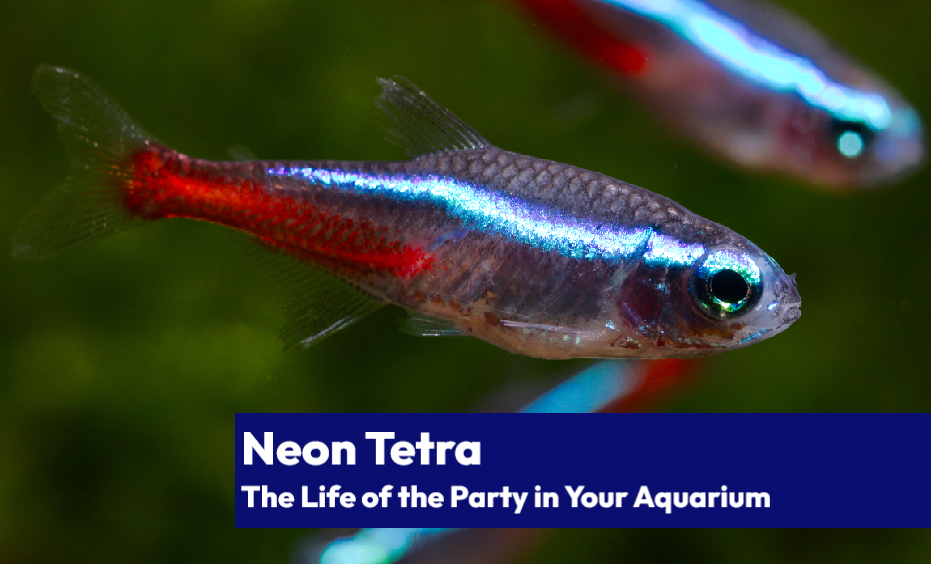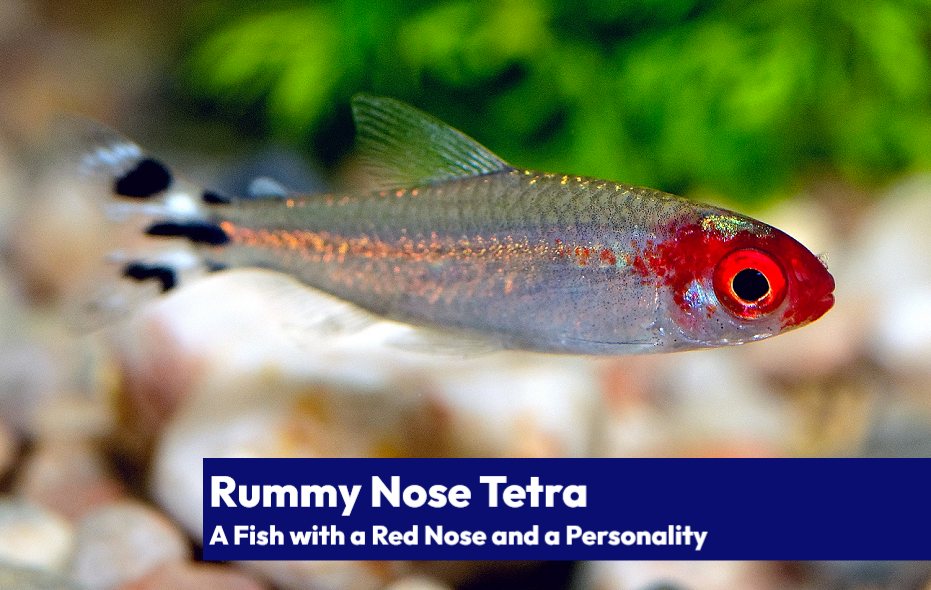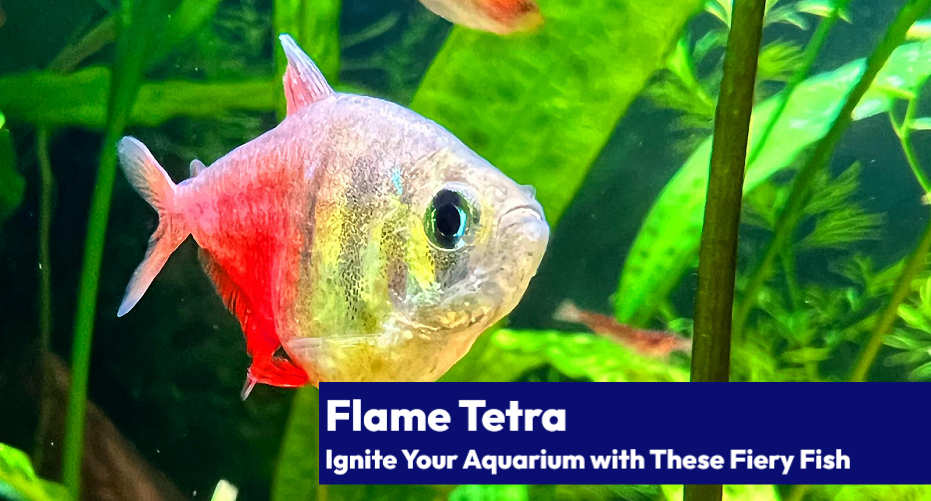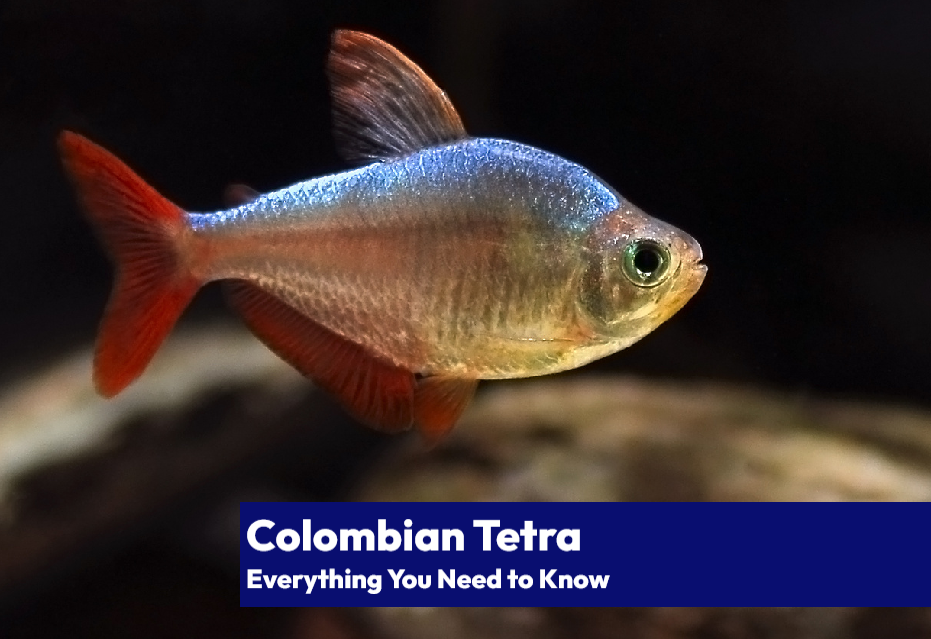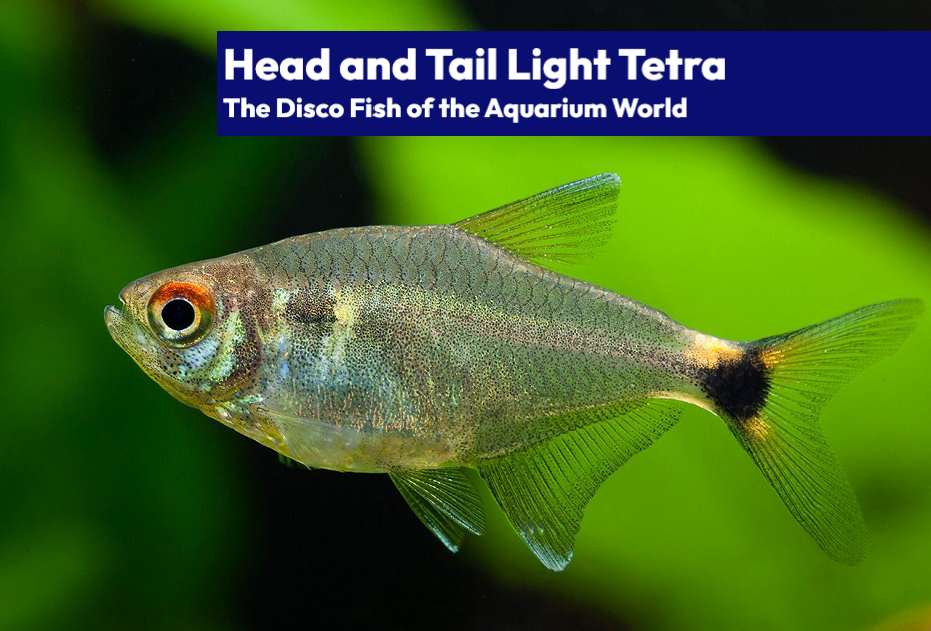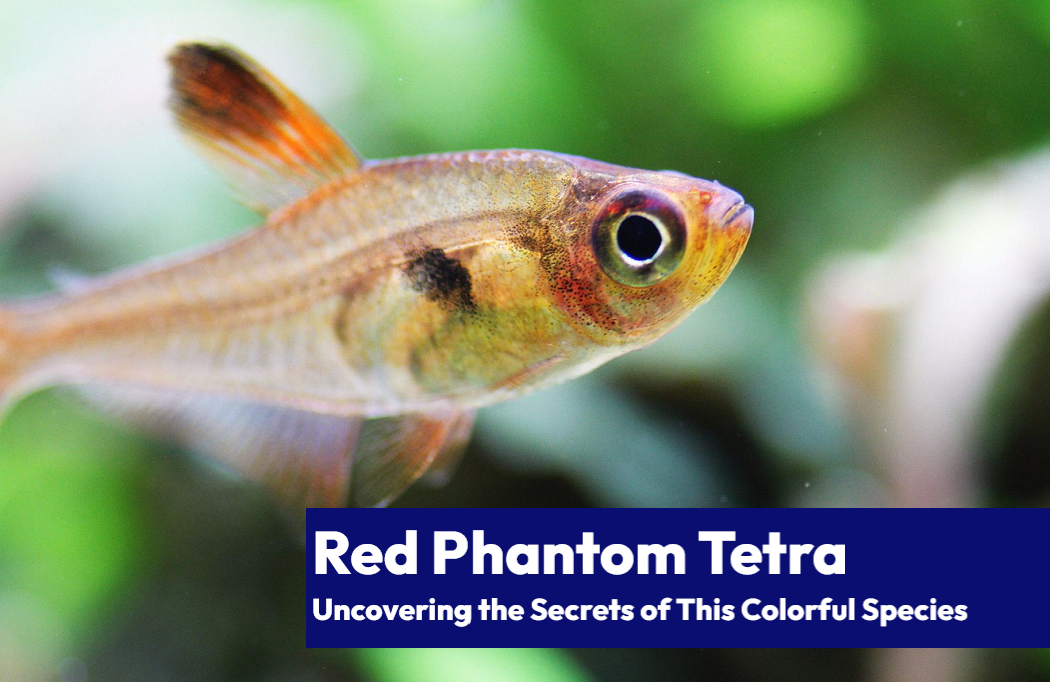Who doesn’t love a flashy party? And, when it comes to the fishy version of Studio 54, nothing beats the neon tetra (Paracheirodon innesi). These shimmering gems of the aquarium hobby will get your tank grooving in no time! So, strap on your dancing shoes, and let’s dive into the world of neon tetras.
A Neon Tetra Rundown: What’s the Hype About? 💃
Neon tetras are small, colorful, and active fish that add a touch of glamour to your aquarium. They’re easy to care for, relatively hardy, and peaceful, making them perfect for beginners and seasoned fishkeepers alike.
The neon tetra’s vibrant colors come from its iridescent blue stripe and fiery red tail – a striking combination that makes them stand out in any tank. Now, let’s get to know these little ravers a bit better, shall we?
| Care Data | (Neon Tetra) Paracheirodon innesi |
|---|---|
| Scientific Name | Paracheirodon innesi |
| Type | Freshwater |
| Adult Size | 1.2 inches (3 cm) |
| Tank Size | 20 gallons (75 L) |
| Optimal Temperature | 72-78°F (22-26°C) |
| General Hardness (dGH) | 1-10 |
| Carbonate Hardness (dKH) | 2-6 |
| Optimal pH Range | 6.0-7.0 |
| Diet Type | Omnivore |
| Feeding Frequency | Twice daily |
| Water Change Frequency | Weekly |
| Can Breed In Captivity? | Yes |
| Number of Fry | 20-30 |
| Spawning Type | Egg scatterer |
| Native Range | South America |
| Temperament | Peaceful |
| Schooling/Shoaling Fish | Yes |
| Known to Jump Out of Tank | Rarely |
| Average Cost (USD) | $1.50-$3.00 |
Neon Tetra’s Glamorous Looks: The Party Never Stops! 🌟

Neon tetras are like little aquatic fireworks with their bright blue and red colors. The iridescent blue stripe that runs horizontally from their head to their adipose fin is simply mesmerizing. But, wait! There’s more! The lower half of their body is adorned with a vivid red stripe that extends from the middle of the body to the caudal fin. Talk about a showstopper!
Their bodies are slightly compressed, and their fins are mostly transparent – a perfect canvas for their stunning colors. While both males and females have the same vibrant coloration, there are a few subtle differences that can help you tell them apart.
When it comes to sexual dimorphism, male neon tetras have a more streamlined body shape and a slightly bent blue stripe. Female neon tetras, on the other hand, are slightly larger and have a rounder body – particularly when they’re carrying eggs.
Anatomy: Disco Ball or Fish? 🐟
So, we know neon tetras are the life of the party, but what about their anatomy? These fish are relatively small, with a slightly compressed body and transparent fins. Their mouth is small, upturned, and perfect for picking off small food particles. The adipose fin is present in these flashy fish, and their large eyes help them navigate dimly lit waters.
To stay cool on the dance floor, neon tetras have a unique adaptation – their colors can change! Yup, you read that right. When they’re resting or stressed, neon tetras’ colors can become more muted. It’s like they’re taking a break from the disco, just for a little while.
Tiny Dancers: Average Size and Growth Rate 🌱
The average size of adult neon tetras is around 1.2 inches (3 cm) in length. They’re petite fish with big personalities! When it comes to growth rate, neon tetras are relatively quick growers. They can reach their adult size within 6 to 8 months, which means you won’t have to wait too long to see them strut their stuff in your tank.
Neon tetras are small fish, reaching an adult size of about 1.2 inches (3 cm). They grow quickly, typically reaching their full size within 6 to 8 months.
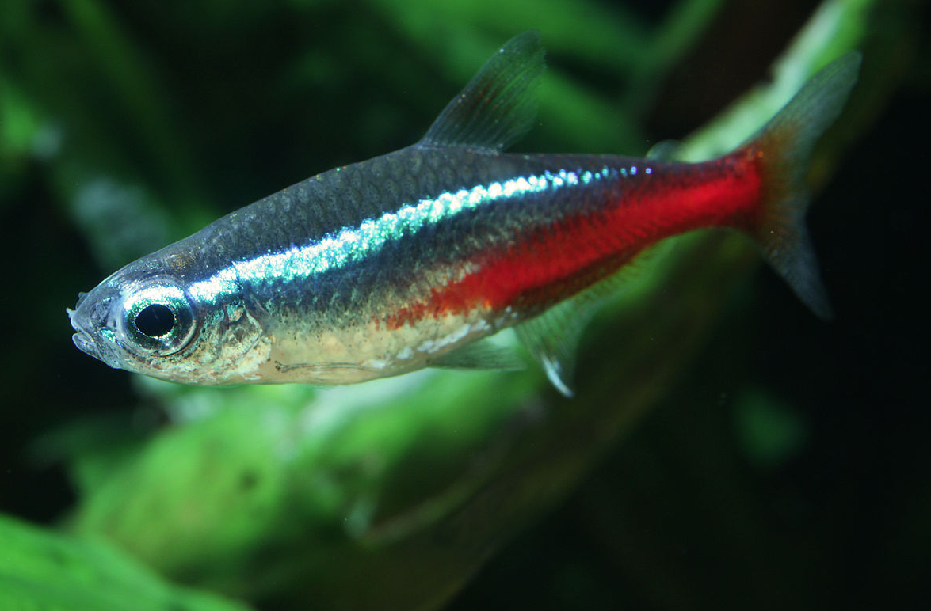
Life of the Party: Neon Tetra Lifespan 🎂
Neon tetras may be small, but they can live a pretty long life. On average, they live for about 5 to 8 years in a well-maintained aquarium. However, some have been known to live up to 10 years with exceptional care. So, if you treat your neons right, they’ll be partying in your tank for a good, long while.
Creating the Perfect Dance Floor: Tank Size 💧
As active little fish, neon tetras need room to swim and play. The minimum tank size for neon tetras is 10 gallons (38 L), but for a proper neon tetra dance party, we recommend a 20 gallon (75 L) tank. This will give them enough space to shoal and live comfortably with some tankmates. Trust me; your neon tetras will thank you for the extra room to groove!
Neon tetras require a minimum tank size of 10 gallons (38 L), but a 20-gallon (75 L) tank is recommended to provide ample space for swimming and shoaling.
Keeping the Beat: Water Parameters 🌡
To keep your neon tetras happy and healthy, you’ll want to maintain the following water parameters:
- Temperature: 72-78°F (22-26°C)
- pH: 6.0-7.0
- General Hardness (dGH): 1-10
- Carbonate Hardness (dKH): 2-6
Setting the Stage: Required Equipment 🎛
To create the perfect environment for your neon tetras, you’ll need the following equipment:
- Heater: A 50-watt adjustable heater will keep your tank at the ideal temperature for these tropical fish.
- Filter: A sponge filter or a small hang-on-back filter with adjustable flow is perfect for neon tetras. These filters provide gentle water movement and won’t stress your fish.
- Lighting: A full-spectrum LED light with a timer will help simulate day/night cycles and encourage plant growth. Make sure to choose a light that fits the length of your tank.
- Optional Extras: Water conditioners, mineralizers, and beneficial bacteria supplements can help keep your water clean and balanced for your neon tetras.
Habitat Requirements: The Ultimate Neon Tetra Party Pad 🏠
For neon tetras to truly thrive, you’ll want to mimic their natural habitat as closely as possible. Start with a dark-colored, fine-grained substrate to contrast their vibrant colors. Include plenty of live plants to provide cover and make them feel safe. Some ideal plant choices for a neon tetra tank include:
Add some driftwood or rocks to create hiding spots and give your aquarium a natural look. You can also add leaf litter or Indian almond leaves to soften the water and create a more authentic environment.
💡 Pro Tip: Providing proper cover, hiding spots, and a comfortable environment will not only make your neon tetras feel secure but also encourage them to display their most vibrant colors.
Catering the Party: Neon Tetra Diet 🍽
Neon tetras are omnivores, which means they’ll enjoy a varied diet. Here are some optimal food choices for your little fishy friends:
- High-quality flake food
- Micro pellets
- Frozen or live brine shrimp
- Frozen or live daphnia
- Frozen or live bloodworms
- Infusoria (for fry)
- Crushed spirulina flakes
Neon tetras should be fed small amounts of food several times a day. Overfeeding can lead to poor water quality and health issues, so it’s essential to monitor their intake.
Party Guests: Behavior and Temperament 🎉
Neon tetras are peaceful, schooling fish that love to swim and play together. They’re most comfortable in groups of at least 6, but a larger group of 10 to 15 will really bring out their best colors and behaviors. In a suitable tank environment, neon tetras will exhibit tight schooling and synchronized swimming, which is an absolute joy to watch!

Choosing the Right Dance Partners: Tankmates 🕺
As peaceful fish, neon tetras can coexist with a variety of tankmates. Just make sure you choose other peaceful, non-aggressive species that won’t outcompete or prey on your neons. Here are some ideal tankmates:
- Cardinal tetras
- Harlequin rasboras
- Pygmy corydoras
- Guppies
- Platies
- Otocinclus catfish
- Cherry shrimp
- Amano shrimp
- Dwarf gouramis
However, you’ll want to avoid housing neon tetras with large, aggressive fish or known fin nippers. Some poor tankmate choices include:
Setting the Mood: Breeding Neon Tetras 💕
Breeding neon tetras can be a bit challenging, but with the right conditions and a little patience, it’s possible to breed them in captivity. To encourage breeding, set up a separate breeding tank with soft, acidic water and plenty of plants for egg deposition. Gradually lower the water temperature and then slowly raise it back to their ideal range, simulating the onset of the rainy season in their natural habitat.
Feed your breeding pair high-quality live or frozen foods to condition them for spawning. When ready, the female will lay around 60 to 130 eggs, which the male will fertilize. After spawning, remove the parents to prevent them from eating the eggs.
The eggs will hatch in about 24 hours, and the fry will become free-swimming in another 3 to 4 days. At this stage, feed them infusoria or other suitable fry foods until they’re large enough to accept crushed flakes or pellets.
Dance Floor Hazards: Diseases and Illnesses 😷
Neon tetras can be susceptible to several common fish diseases. By maintaining good water quality and a stress-free environment, you can help prevent these issues. Some common illnesses found in neon tetras include:
- Neon Tetra Disease
- Ich (White Spot Disease)
- Velvet Disease
- Fin Rot
- Bacterial Infections
If you notice any unusual behaviors or symptoms in your neon tetras, take action immediately to address the issue and consult a fish health expert if needed.
The Birthplace of the Party: Origin and Native Range 🌎
Neon tetras originate from the Amazon Basin in South America, specifically from the rivers of Brazil, Colombia, and Peru. These tropical fish are found in slow-moving, shaded waters with dense vegetation, which provides them with ample hiding spots and protection from predators.
The Perfect Playlist: Bioluminescence and Neon Tetras 🌟
Neon tetras are known for their beautiful bioluminescent colors, which make them stand out in any aquarium. These tiny fish have a unique ability to absorb and re-emit light, creating a stunning glowing effect. This phenomenon is called fluorescence and plays a crucial role in their survival, as it helps them blend in with the colorful surroundings of their native habitats.
Deep Dive: Taxonomy 💡
Understanding the taxonomy of neon tetras can help you better appreciate their place in the aquatic world. Here’s a quick rundown of their classification:
| Kingdom | Animalia |
|---|---|
| Phylum | Chordata |
| Class | Actinopterygii |
| Order | Characiformes |
| Family | Characidae |
| Genus | Paracheirodon |
| Species | P. innesi |
TL;DR: The Neon Tetra Party Essentials 🎈
- Neon tetras are small, peaceful, schooling fish.
- Stunning bioluminescent colors make them a popular choice for aquarium hobbyists.
- Require soft, acidic water and a well-planted tank for optimal health.
- Best kept in groups of 6 or more to encourage natural behaviors.
- Omnivorous diet: feed a mix of high-quality flakes, pellets, and live or frozen foods.
- Compatible with other peaceful, non-aggressive tankmates.
- Breeding can be challenging, but possible with the right conditions.

Tim Priest, a renowned aquarium expert with over 15 years of experience in aquatic gardening and fish education, is dedicated to helping enthusiasts create stunning and thriving aquatic environments. As the founder of LearnTheAquarium.com, Tim shares his wealth of knowledge, passion, and expertise through engaging articles, educational resources, and personalized advice.
Discover the secrets to creating captivating underwater landscapes and maintaining healthy aquatic ecosystems. Join Tim on an exciting journey and let your aquarium adventure begin!
